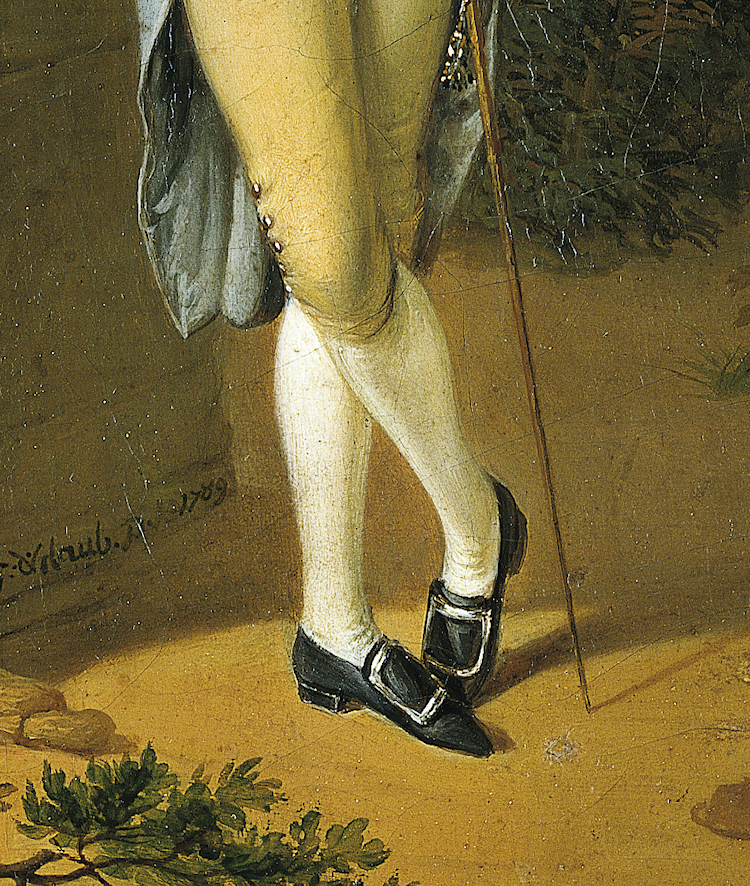1789.png) |
| Johann Georg von Holzhausen (1771-1846). |
a.png) |
| Henriette von Holzhausen (1773-1834). |
1789a.png) |
| Friedrich Adolph Carl von Holzhausen (1776-1811). |
*
*
*
Georg Karl Samuel Urlaub (3 October 1749, Ansbach - 26 October 26, 1811 in Darmstadt ), German painter, the younger son of the painter Georg Christian Urlaub. He thus came from the well-known Franconian family of painters Urlaub, of which he was the most important member alongside his older brother Georg Anton Abraham, his uncle Georg Anton, and his grandfather Georg Sebastian. He initially received training from his father and, after his father's death, from his older brother. He lived in Würzburg until 1773, then later in Schweinfurt, before spending two years at the comital court in Wertheim am Main from 1779. He was then employed at the court in Hanau, and remained in the city long after being relieved of his duties as a painter at court. Known for his work as a portrait, genre, and landscape painter, later in his career he turned increasingly to history painting. He lost his sight in 1803 and, sometime before his death, he and his wife moved to Darmstadt to live with their son Jeremias August Urlaub, who also worked as a painter; their second son, Anton, also worked as an engraver and painter.

















delightful!
ReplyDelete